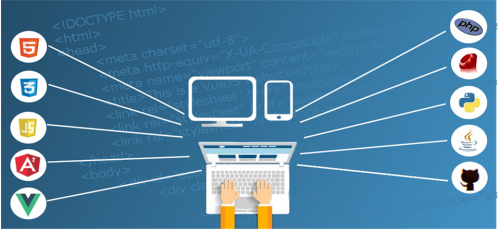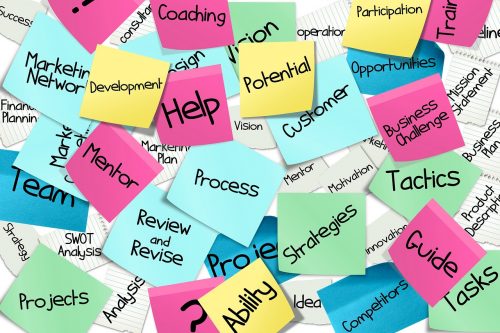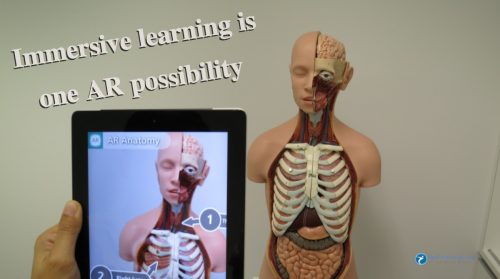
by Harshala | Oct 12, 2018 | Analytics, Industry News, State of the Web, Web Design
What is Artificial Intelligence (AI)?
Artificial intelligence (AI) is the ability of a computer program or a machine to think and learn. It is also a field of study which tries to make computers smart. As machines become increasingly capable, mental facilities once thought to require intelligence are removed from the definition. Artificial intelligence (AI) is an area of computer science that emphasizes the creation of intelligent machines that work and react like humans. Some of the activities computers with artificial intelligence are designed for include: Speech recognition and learning.
Why is AI important?
Artificial Intelligence is the machines which are designed and programmed in such a manner that they and think and act like a human. Artificial Intelligence becomes the important part of our daily life. Our life is changed by AI because this technology is used in a wide area of day to day services.

(more…)

by Harshala | Oct 5, 2018 | Employment Issues, Industry News
What do we mean by employment trends?
A pattern of gradual change in a condition, output, or process, or an average or general tendency of a series of data points to move in a certain direction over time, represented by a line or curve on a graph.
This week’s blog we will seeing the latest trends in the employment (particularly for web professionals).
10 Workplace Trends in 2018
Dan Schawbel provided a forecast for the Top 10 workplace trends for the upcoming year. His purpose is to help prepare organizations for the future by collecting, assessing and reporting the trends that will most impact them. Obviously, most of these impact many industries (not just web professionals).
The top workplace trends for 2018 include:
- Leaders encourage more human interaction
- The next wave of learning credentials
- Companies focus on upskilling and retraining current workers
- Artificial intelligence becomes embedded in the workplace
- Financial and mental wellness get prioritized
- Employee burnout causes more turnover
- Workforce decisions sway consumer behavior
- Companies take diversity more seriously
- The deregulation of labor laws
- The aging workforce

(more…)

by Harshala | Sep 28, 2018 | Web Administration, Web Pro Education, Web Professional Trends
What are Web Servers?
For those just beginning to learn about web technologies, we thought it might be helpful to provide this foundational article. A Web server is a program that uses HTTP (Hypertext Transfer Protocol and the secure HTTPS version) to serve the files that form Web pages to visitors, in response to their requests (which come from the requesting computers browsers). Dedicated computers and appliances may be referred to as Web servers.
Web server also refers to server software, or hardware dedicated to running said software, that can serve contents to the World Wide Web. A web server processes incoming network requests over HTTP and related protocols. This Wikipedia link gives more information on Web Server.

(more…)

by Harshala | Sep 14, 2018 | Industry News
Why Your Business Needs a Mobile App?
More and more small and midsize businesses are following the mobile trend, understanding that an effective mobile strategy involves more than just a mobile-friendly website. These days you’ll notice that many small businesses you interact with in your everyday life have their own dedicated mobile app. These companies are ahead of the game when it comes to taking their marketing to the next level.

Here are 7 reasons of why your business needs a mobile App.
Speaking of apps, here are some of those we have found useful. Perhaps you rely on others. Please post yours in the comments.
(more…)

by Harshala | Sep 7, 2018 | Content Strategy, Industry News, State of the Web
What is Virtual Reality?
The computer-generated simulation of a three-dimensional image or environment that can be interacted with in a seemingly real or physical way by a person using special electronic equipment, such as a helmet with a screen inside or gloves fitted with sensors. The definition of virtual reality comes, naturally, from the definitions for both ‘virtual’ and ‘reality’. The definition of ‘virtual’ is near and reality is what we experience as human beings. So the term ‘virtual reality’ basically means ‘near-reality’. This could, of course, mean anything but it usually refers to a specific type of reality emulation.

(more…)

by Harshala | Aug 24, 2018 | Uncategorized
What is World Wide Access or Accessible Web Design?
The World Wide Web has rapidly become the dominant Internet tool, combining hypertext and multimedia to provide a network of educational, governmental, and commercial resources. Because of the multimedia nature of the web and the poor design of some websites, many Internet users cannot access the full range of resources. Some visitors cannot see graphics, cannot hear audio, cannot operate a mouse, uses slow Internet connections and modems or equipment that cannot easily download large files, or have difficulty navigating sites that are poorly organized with unclear directions because they have learning disabilities, speak English as a second language, or are younger than the average user.
What is Accessible Design?
Accessible design is a design process in which the needs of people with disabilities are specifically considered. Accessibility sometimes refers to the characteristic that products, services, and facilities can be independently used by people with a variety of disabilities.
The World Wide Web Consortium (W3C) develops and maintains the protocols used on the web to insure interoperability to promote universal access. The W3C’s Web Accessibility Initiative (WAI) has proposed guidelines for all web authors.

(more…)

by Harshala | Aug 17, 2018 | Content Strategy, Web Content
What is Information Architecture?
Information architecture is the practice of deciding how to arrange the parts of something to be understandable. It is in the websites we use, the apps and software we download, the printed materials we encounter, and even the physical places we spend time in.
A good Information Architecture helps people to understand their surroundings and find what they’re looking for – in the real world as well as online. Practicing information architecture involves facilitating the people and organizations we work with to consider their structures and language thoughtfully.

Information architecture (IA) focuses on organizing, structuring, and labeling content in an effective and sustainable way. The goal of IA is to help users find information and complete tasks. To do this, we users need to understand how the pieces fit together to create the larger picture, how items relate to each other within the system.
As many students (and teachers) begin a new term this month, we thought it would be helpful to review some of these fundamental tenants. It is always a good idea to focus on the basics and make certain we have a solid foundation.
(more…)

by Harshala | Aug 10, 2018 | Content Strategy, Semantic Web, Web Content
What is Semantic Markup mean?
Semantics is the study of language meaning – the words used to communicate. Semantic markup should be used in web pages we create and modify.
In our technology world we use semantic language. Semantic HTML is the use of HTML markup to reinforce the meaning of the information in webpages and web applications rather than merely to define its presentation or look. Semantic HTML is processed by traditional web browsers as well as by many other user agents.
For HTML it is the tags we use to mark a document up. Markup is how a web document is created, or the way you write a document using the language available to you. For most web documents this is still HTML, so it is how you write the content you want to display using HTML.

(more…)

by Harshala | Aug 3, 2018 | Employment Issues, Job and Resume Tips from the Pros
What work skills can make you more marketable to employers in 2018?
Change is always constant. So naturally, the job skills that employers look for in new hires change from year to year. It’s one of the best ways for companies to stay competitive and ahead of the never-ending curve. According to Julie Friedman Steele, board chair and CEO at World Future Society “The workplace moves rapidly and employers need workers who stay current.” That means you need to consistently improve your skills and develop new ones.

Here are 7 work skills most employers look for –
- Problem solving
- Data analytics
- Social media literacy
- Creativity
- Resiliency
- Good business sense
- Willingness to learn
This list comes from a good article covering 7 work skills which make you more marketable to employers in 2018. Note that most of these relate to non-technical skills. Those are assumed these days.
(more…)

by Harshala | May 18, 2018 | Industry News, Web Content
The Web continues to evolve. Recent projections indicate that virtual reality and augmented reality may soon become a major part of web interfaces. We thought it might be helpful to provide a quick overview of these technologies and provide additional resources about the potential impact on the web. As an aspiring or practicing professional, you should be aware of these technologies.
What is Virtual Reality?
Virtual Reality is the computer-generated simulation of a three-dimensional image or environment that can be interacted with in a seemingly real or physical way by a person using special electronic equipment, such as a helmet with a screen inside or gloves fitted with sensors.
Current VR technology most commonly uses virtual reality headsets or multi-projected environments, sometimes in combination with physical environments or props, to generate realistic images, sounds and other sensations that simulate a user’s physical presence in a virtual or imaginary environment. This Wikipedia article has detailed information about the technology and its applications.
What is Augmented Reality?
Augmented reality (AR) is a direct or indirect live view of a physical, real-world environment whose elements are “augmented” by computer-generated perceptual information, ideally across multiple sensory modalities, including visual, auditory, haptic, somatosensory, and olfactory. The overlaid sensory information can be constructive or destructive and is spatially registered with the physical world such that it is perceived as an immersive aspect of the real environment. In this way, augmented reality alters one’s current perception of a real world environment, whereas virtual reality replaces the real world environment with a simulated one. Augmented Reality is related to two largely synonymous terms: mixed reality and computer-mediated reality. You can find more information about this at this Wikipedia article.

(more…)











